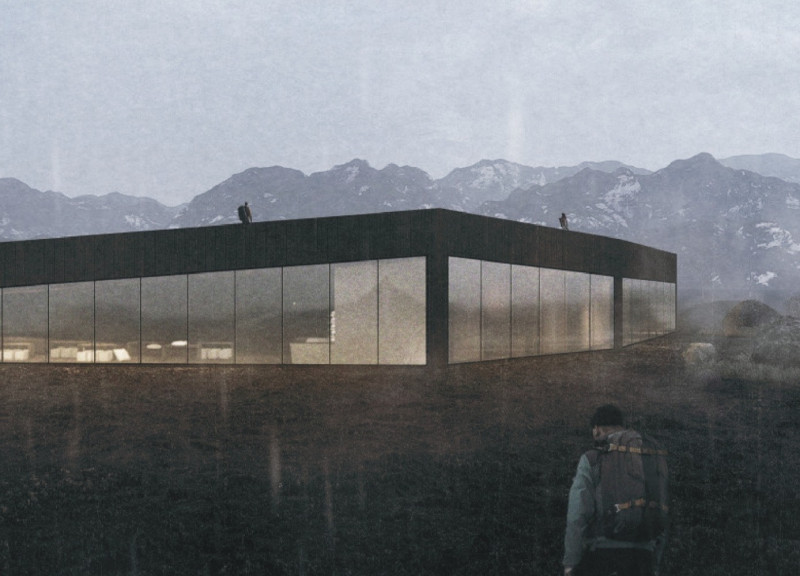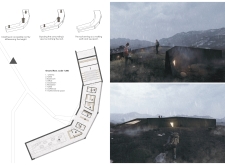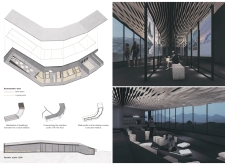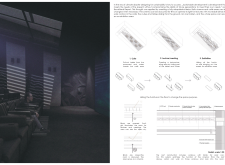5 key facts about this project
The primary function of "The Walk" is to serve as a multifaceted community space. It accommodates various activities, including a café, workshops, and a cinema, encouraging social interaction and cultural engagement. The design reflects a commitment to sustainability and environmental responsibility, using materials that harmonize with the natural context while preserving the ecological integrity of the site.
A key aspect of "The Walk" is its innovative approach to structure and materiality. The building is partially embedded in the landscape, allowing it to minimize visual disruption and maintain a low profile against the majestic backdrop of the Hverfjall Volcano. The use of concrete as a primary building material offers both structural stability and a minimalist aesthetic. Additionally, timber finishes within the interior space provide warmth, contrasting with the robust concrete and enhancing the overall sensory experience for visitors.
One of the most notable features of this architectural design is the roof, which serves a dual purpose as both a walking path and an observation deck. This design choice not only invites visitors to engage with the surrounding environment but also encourages exploration of the site from a unique perspective. The variance in ceiling heights throughout the interior spaces fosters an intimate and comfortable atmosphere, responding to the needs of users while promoting interaction among them.
The extensive use of glass in the building's façade creates a visual connection between the indoors and outdoors, allowing natural light to flood the interior spaces. This transparency facilitates a continual dialogue with nature, helping to create an immersive experience that fosters a sense of tranquility and reflection. The integration of solar control elements within the design ensures energy efficiency, allowing the building to harness natural resources effectively.
In terms of layout, "The Walk" features a flexible arrangement that can be adapted for different functions and user needs. Areas designated for social gatherings and workshops are easily configurable, promoting a sense of community involvement and encouraging diverse activities. Such adaptability is crucial for maintaining visitor engagement and catering to a variety of events throughout the year.
The sustainable design practices employed in "The Walk" reflect a growing trend within architecture to honor the environment. By using local materials, the project minimizes its carbon footprint while celebrating the natural beauty of Iceland. The emphasis on incorporating nature into the overall design conveys an understanding of the importance of preserving ecological balance in the face of modern development.
Ultimately, "The Walk" represents a convergence of thoughtful architectural design and environmental stewardship. It stands as a space for community interaction, one that engages visitors with the exquisite surroundings while prioritizing sustainability. For those interested in exploring the architectural plans, sections, and specific design elements that define this project further, a review of the detailed project presentation is encouraged. This exploration will provide deeper insights into the architectural ideas and design choices that underline the essence of "The Walk."


























